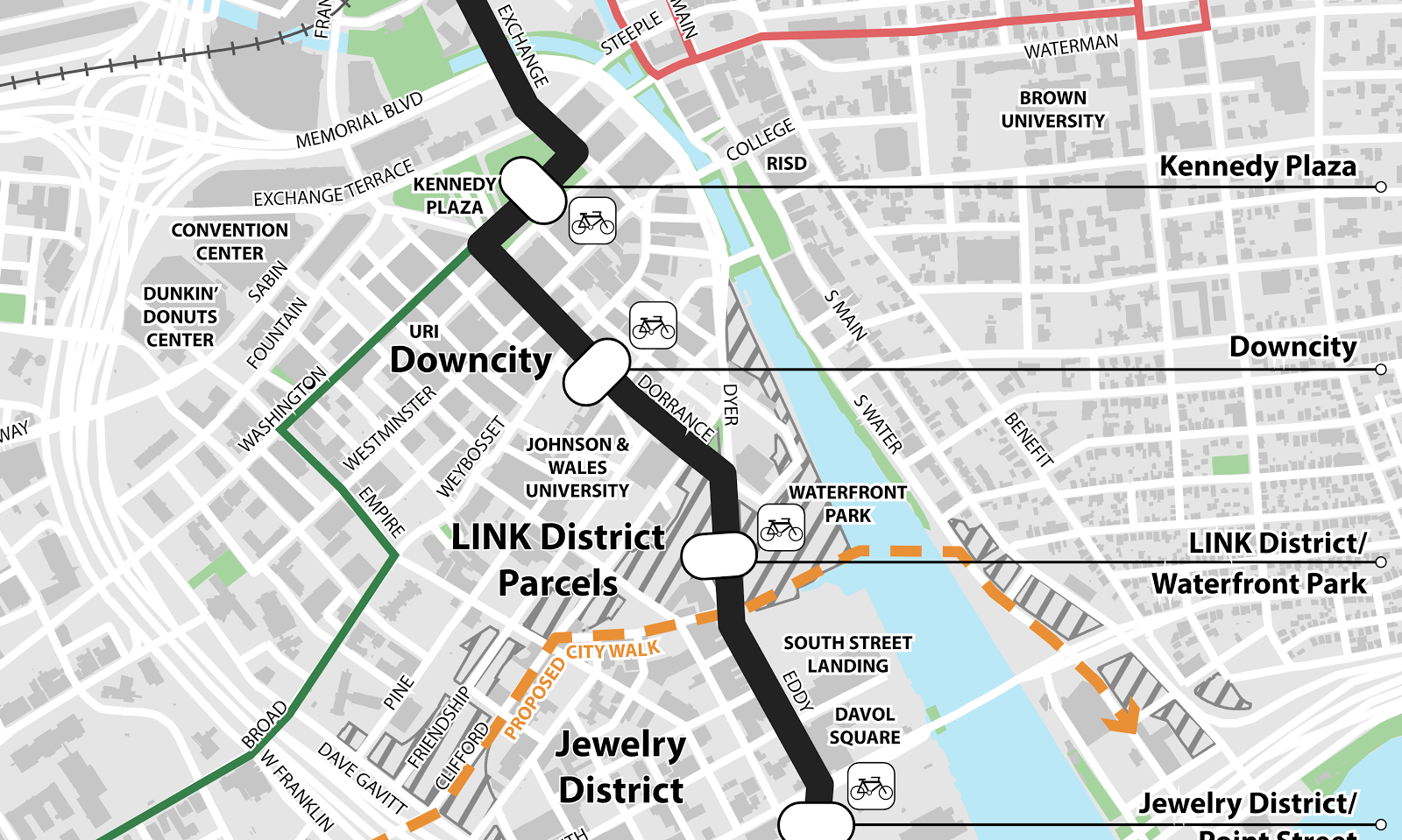
A rendering of the Downtown Connector in Providence. Credit: WSP
This summer, the Rhode Island Public Transit Authority (RIPTA) and the City of Providence will break ground on the Downtown Transit Connector.
By extending routes through downtown and consolidating a large portion of RIPTA’s transit service on one path, buses will run every five minutes between the Providence Station, through the downtown core, and to the Ocean State’s largest hospital. The upgrade to transit frequency will be accompanied by bus lanes, shelters with real time information, wider sidewalks, and priority for buses at intersections. 9,000 riders are projected to use the service, for the cost of 17 million.

The only thing the project is missing is flash – it doesn’t come with slick branding or promises of economic development.
Yet, like so many other urban American transportation proposals, that’s how the project started out. In 2013, the City of Providence submitted a $125 million TIGER grant proposal for a streetcar that would run only every 12 minutes downtown. USDOT responded with a mere $13 million, causing the agency to rethink its strategy.
Amy Pettine, RIPTA’s interim CEO and her staff quickly got to work developing an alternative plan in conjunction with the City of Providence – consolidating downtown bus routes onto Dorrance Street, and pairing those changes with the type of capital improvements typically associated with a streetcar. As RIPTA’s interim planning director Greg Nordin states, “while possibly lacking in ‘flash,’ [the projects] offer significant improvements to RIPTA’s operations that assist in creating a more functional system.” And the city and transit system dodged the bullet of building a costly white elephant along the lines of Atlanta’s downtown loop, D.C.’s H Street streetcar, Salt Lake’s Sugar House Line — the list goes on.
RIPTA’s no-nonsense approach to getting the biggest bang for its buck also extends beyond the Downtown Transit Connector. From traffic signals to bus stops, it has has been quietly transforming transit service in the state. In 2013, it launched a Comprehensive Operations Analysis in order to tweak poorly performing routes. This resulted in the creation of “key corridors” – routes that serve the state with 20 minute or better frequencies.
To speed up service, RIPTA has installed transit traffic signal priority at over 60 intersections along the state’s busiest bus route. The time saved by extending the green signal for buses allowed the agency to use one less bus on the route. RIPTA then funneled those savings into adding service, improving frequency on weekends and in the evenings. It has also rebalanced bus stops throughout the entire network, slimming down from 5,000 to only 3,800 stops.
Using the recently-drafted bus stop design guidelines, RIPTA is also coordinating with municipalities in the state to add shelters, real-time information and trash cans.
In an uncertain funding environment, RIPTA is demonstrating the utility of non-flashy, tactical improvements that are within reach of any transit agency.
 On the Brink: Will WMATA’s Progress Be Erased by 2024?
On the Brink: Will WMATA’s Progress Be Erased by 2024?
The experience of being a WMATA rider has substantially improved over the last 18 months, thanks to changes the agency has made like adding off-peak service and simplifying fares. Things are about to get even better with the launch of all-door boarding later this fall, overnight bus service on some lines starting in December, and an ambitious plan to redesign the Metrobus network. But all of this could go away by July 1, 2024.
Read More A Bus Agenda for New York City Mayor Eric Adams
A Bus Agenda for New York City Mayor Eric Adams
To create the “state-of-the-art bus transit system” of his campaign platform, Mayor Adams will have to both expand the quantity and improve the quality of bus lanes. We recommend these strategies to get it done.
Read More